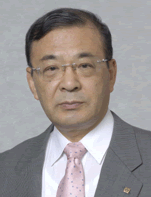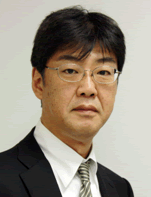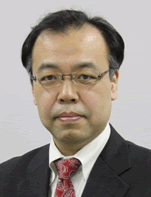2012 Recipients of C&C Prize
Group A

Dr. Osamu Yamada Guest Professor, Waseda University |

Dr. Toru Kuroda Deputy Head, NHK Science & Technology Research Laboratories |

Mr. Masayuki Takada Senior Research Engineer, NHK Science & Technology Research Laboratories |
Citation
For outstanding leadership in the research and development of the ISDB-T digital terrestrial television broadcasting system
Achievement
In December 2003, a digital terrestrial television broadcasting (DTTB) system called as ISDB-T (Integrated Services Digital Broadcasting-Terrestrial) was put to practical use in Japan. Since then, this system has been deployed very rapidly thanks to a high level of interest in high-quality television pictures and in One-Seg broadcasting for cellular phones, etc. This system has many technological features, such as efficient use of radio frequency resources, high-quality audio and video, capabilities for new data broadcasting services, and broadcasting to mobile terminals. After analog terrestrial television broadcasts ended in Japan on July 24, 2011, ISDB-T technology including mobile TV came to be viewed around the world as a key technology for broadcasting and communications.
Dr. Osamu Yamada, Dr. Toru Kuroda, and Mr. Masayuki Takada started their basic research on digital terrestrial broadcasting in the late 1970s, which is over a decade earlier than its development for practical use in the early 1990s. In 1986, they started basic research on new modulation technology (i.e., Orthogonal Frequency Division Multiplexing, or OFDM) for digital terrestrial broadcasting. In addition, in 1991, they firstly developed experimental OFDM equipment for broadcasting in Japan. Moreover, two years later, they carried out the field experiment using the OFDM broadcasting equipment and succeeded in the mobile reception of television broadcasting firstly in the world.
Their efforts led to maximum and flexible use of limited frequency resources. They proposed and developed Band Segmented Transmission-OFDM (BST-OFDM), which, divides a television channel signal into 13 segments. The BST-OFDM television system supplies high-definition TV broadcasting through the main segments and mobile-use broadcasting through residual segments (e.g., for the One-Seg broadcasting). Therefore, the system simultaneously satisfies requirements for efficiency, flexibility, and mobility. Next, they integrated the technologies and services into an entire broadcasting system called Integrated Services Digital Broadcasting - Terrestrial (ISDB-T) for HDTV and One-Seg use based on the BST-OFDM technology.
An ISDB-T system has the following features.
- It can provide services for both stationary and mobile receivers simultaneously because BST-OFDM uses 13 OFDM segments with different transmission parameters to enable hierarchical transmission up to three layers.
- It simultaneously offers stable and robust receiving characteristics for both stationary and mobile receivers because the system has been primarily designed to meet stringent environments for mobile broadcasting.
- An ISDB-T receiver can be easily applied for digital terrestrial sound and multimedia broadcasting because transmission system for ISDB-T can be the same for such broad- casting system except for bandwidth.
Numerous efforts were made at the International Telecommunication Union‘s Radio- communications Sector (ITU-R) to standardize the ISDB-T system. This mainly involved the work of a Japanese delegation to a task group (TG11/3) that included the three C&C Prize recipients. Following standardization by the Advanced Television Systems Committee (ATSC) of the United States and the Digital Video Broadcast - Terrestrial (DVB-T) of the EU, ISDB-T gained approval as an international standard at ITU-R Radiocommunication Assembly 2000 in Istanbul.
Moreover, in 2000, Brazil gave high marks to the excellent performance of ISDB-T and to the flexibility of its system, such as its mobile reception capability and One-Seg functions. In June 2006, after long promotional campaigning by Japan, the United States, and Europe, Brazil decided to designate ISDB-T as the transmission system for DTTB. Subsequently, ISDB-T was accepted as the national DTTB system in many countries, including Argentina, Chile, Peru, Venezuela, the Philippines, etc.
Dr. Yamada fully applied himself to his work as the leader of ISDB-T system development from the early stages of invention and development to standardization and global deployment. Dr. Kuroda significantly contributed to the system at the development stage as the technological leader of the development team. In addition, Mr. Takada was a researcher from an early stage of development. His main contributions were standardization and domestic and global deployment of the ISDB-T system. Of course, Japan‘s DTTB would not have been successfully completed without the unified efforts and cooperation of members of the NHK Science & Technology Research Laboratories (STRL), as well as many other people, including those from manufacturers, government agencies, and technology councils. However, the C&C Prize recipients themselves truly showed outstanding leadership and played extremely important roles in developing and commercializing the ISDB-T system.
The NEC C&C Foundation thus highly praises Dr. Yamada, Dr. Kuroda, and Mr. Takada for their contributions to the advancement of the information technology industry through the research and development of the entire ISDB-T DTTB system.
